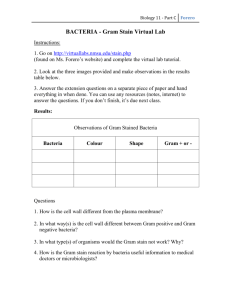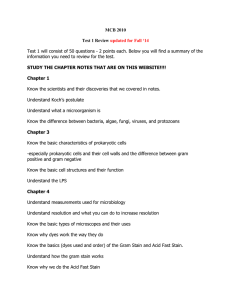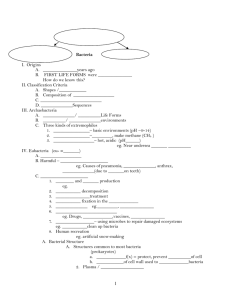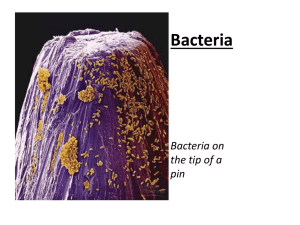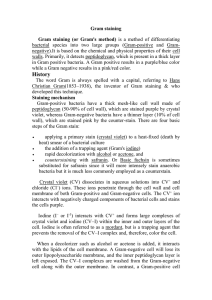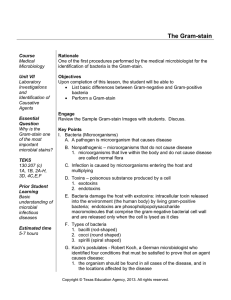The Utility of Gram Stain and Culture in the Management... Dar es Salaam, Tanzania
advertisement
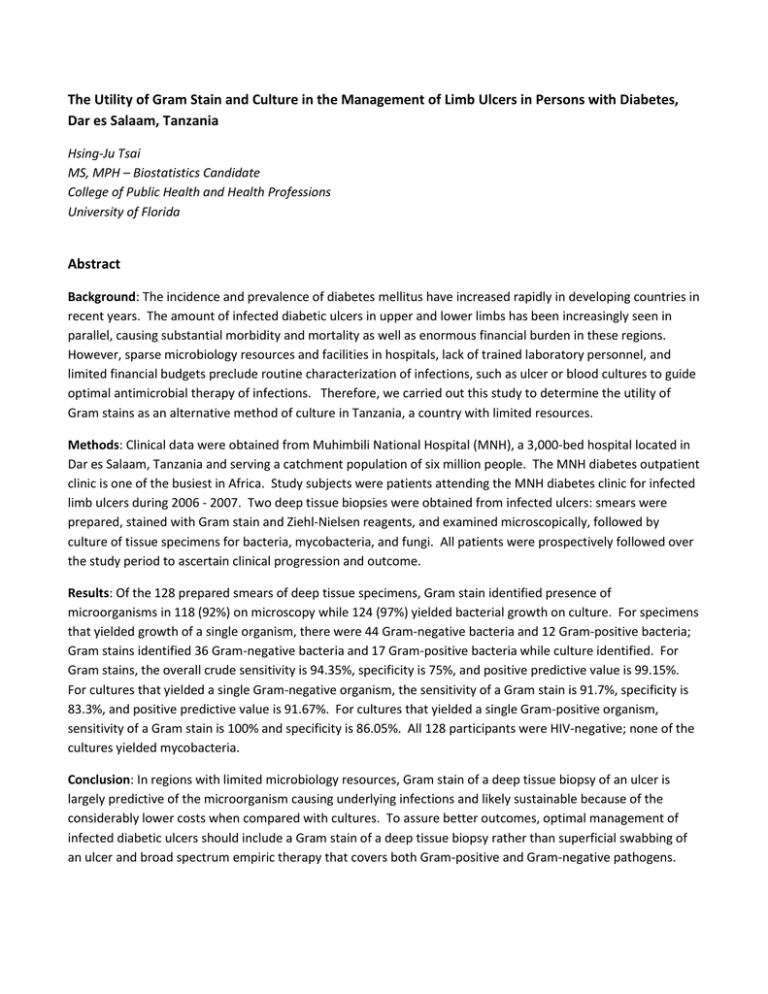
The Utility of Gram Stain and Culture in the Management of Limb Ulcers in Persons with Diabetes, Dar es Salaam, Tanzania Hsing-Ju Tsai MS, MPH – Biostatistics Candidate College of Public Health and Health Professions University of Florida Abstract Background: The incidence and prevalence of diabetes mellitus have increased rapidly in developing countries in recent years. The amount of infected diabetic ulcers in upper and lower limbs has been increasingly seen in parallel, causing substantial morbidity and mortality as well as enormous financial burden in these regions. However, sparse microbiology resources and facilities in hospitals, lack of trained laboratory personnel, and limited financial budgets preclude routine characterization of infections, such as ulcer or blood cultures to guide optimal antimicrobial therapy of infections. Therefore, we carried out this study to determine the utility of Gram stains as an alternative method of culture in Tanzania, a country with limited resources. Methods: Clinical data were obtained from Muhimbili National Hospital (MNH), a 3,000-bed hospital located in Dar es Salaam, Tanzania and serving a catchment population of six million people. The MNH diabetes outpatient clinic is one of the busiest in Africa. Study subjects were patients attending the MNH diabetes clinic for infected limb ulcers during 2006 - 2007. Two deep tissue biopsies were obtained from infected ulcers: smears were prepared, stained with Gram stain and Ziehl-Nielsen reagents, and examined microscopically, followed by culture of tissue specimens for bacteria, mycobacteria, and fungi. All patients were prospectively followed over the study period to ascertain clinical progression and outcome. Results: Of the 128 prepared smears of deep tissue specimens, Gram stain identified presence of microorganisms in 118 (92%) on microscopy while 124 (97%) yielded bacterial growth on culture. For specimens that yielded growth of a single organism, there were 44 Gram-negative bacteria and 12 Gram-positive bacteria; Gram stains identified 36 Gram-negative bacteria and 17 Gram-positive bacteria while culture identified. For Gram stains, the overall crude sensitivity is 94.35%, specificity is 75%, and positive predictive value is 99.15%. For cultures that yielded a single Gram-negative organism, the sensitivity of a Gram stain is 91.7%, specificity is 83.3%, and positive predictive value is 91.67%. For cultures that yielded a single Gram-positive organism, sensitivity of a Gram stain is 100% and specificity is 86.05%. All 128 participants were HIV-negative; none of the cultures yielded mycobacteria. Conclusion: In regions with limited microbiology resources, Gram stain of a deep tissue biopsy of an ulcer is largely predictive of the microorganism causing underlying infections and likely sustainable because of the considerably lower costs when compared with cultures. To assure better outcomes, optimal management of infected diabetic ulcers should include a Gram stain of a deep tissue biopsy rather than superficial swabbing of an ulcer and broad spectrum empiric therapy that covers both Gram-positive and Gram-negative pathogens.


